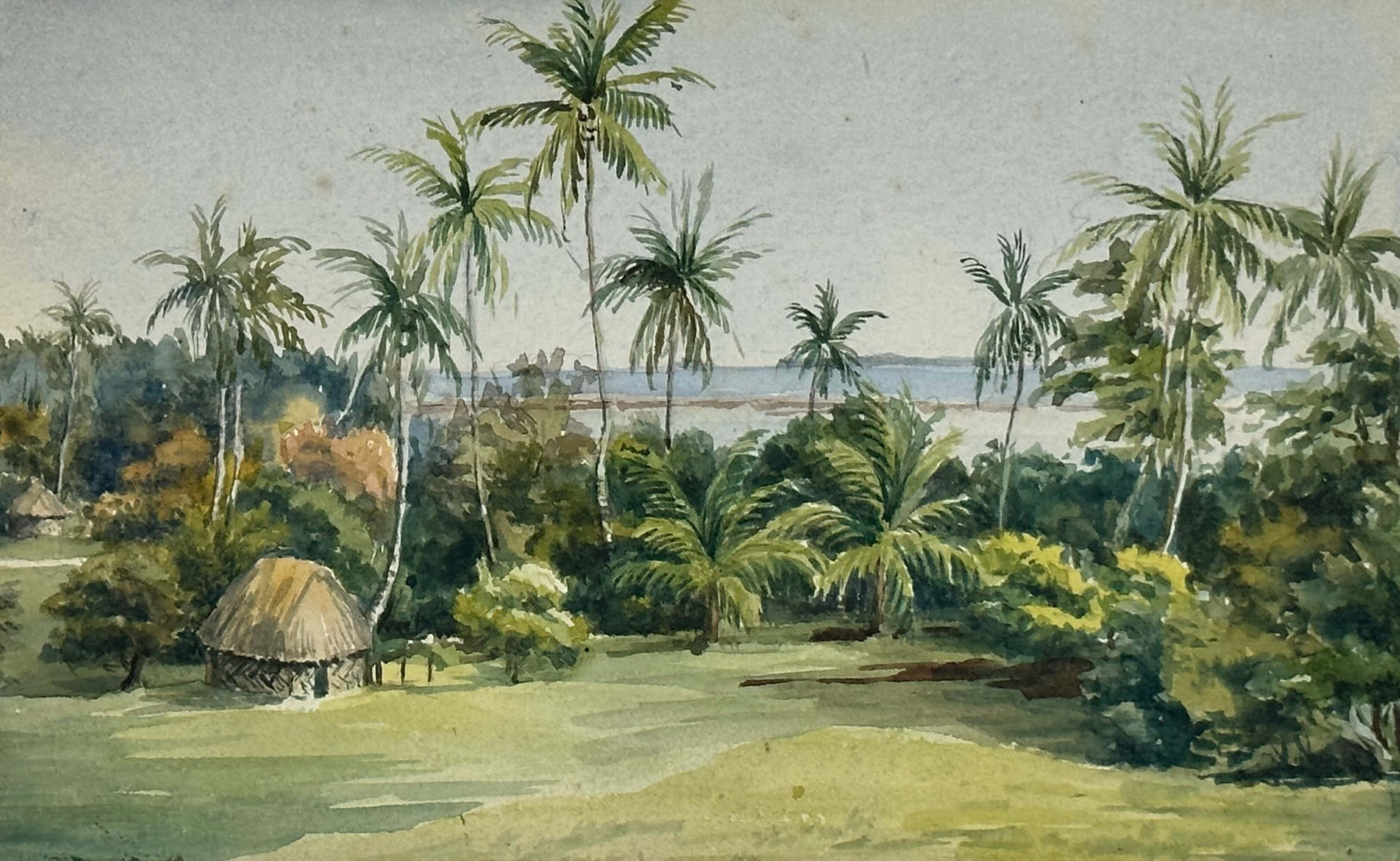



#MC33
Ca. 1911
Three loose watercolours, including one ca. 28x38 cm (11x15 in), and two ca. 14x22,5 cm (5 ½ x 8 ¾ in). All watercolours with period pencil captions on verso. The large watercolour with needle holes in the corners after being mounted, all with old mount residue on verso, but overall a very good collection of bright and sound watercolours.
Attractive collection of three watercolour views of Tonga, then a British protectorate, created by one “Lucy Burton” – possibly, a relative of Rev. John Wear Burton (1875-1970), a noted Methodist minister from New Zealand, who served as a missionary to the East Indian settlers on Fiji in 1902-1911. According to the pencil captions on verso, the drawings were made in August 1911.
The watercolours include two views of Nuku’alofa – the capital and largest city of Tonga. The view of Nuku’alofa harbour shows the long pier and wharf structures on shore, and several red-roof buildings of the settlement; the other drawing is an idyllic view of a palm grove and native thatched-roof houses. The large watercolour is a scene with a traditional house (thatched roof and walls with ornamental design); according to the caption on verso, it was drawn near the Swallows Cave – a natural site and modern-day tourist destination on Kava Island. Overall a beautiful collection of watercolour views of Tonga. A list of pencil captions on verso: Nukualofa, Tonga Is., Aug. [5?] 1911; Nukualofa, Tonga Is., Aug. 5 1911; Swallows Cave, Tongan House.
John Wear Burton graduated from Prince Alfred Theological College (Auckland), Canterbury College (University of New Zealand), and the University of Melbourne. He served as a missionary in Fiji (1902-1911), Conference Foreign Mission Secretary (1914-24), Chief Religious Work Director with the Australian Y.M.C.A. (1918-1920), editor of “Missionary Review” (since 1922), President of the Methodist Conference of New South Wales, &c. (see more: Who is Who in Australia, 1938, pp. 103-104; Australian Dictionary of Biography, Vol. 7, 1979).











